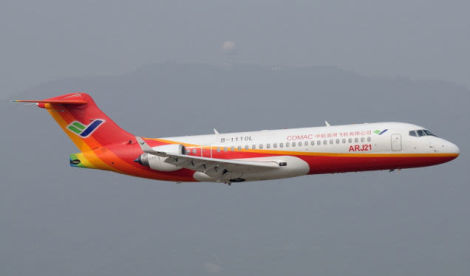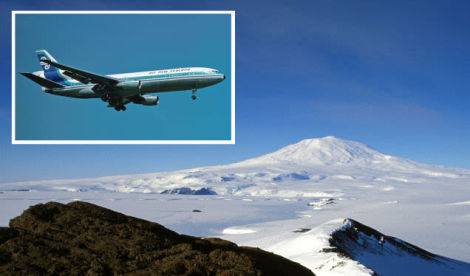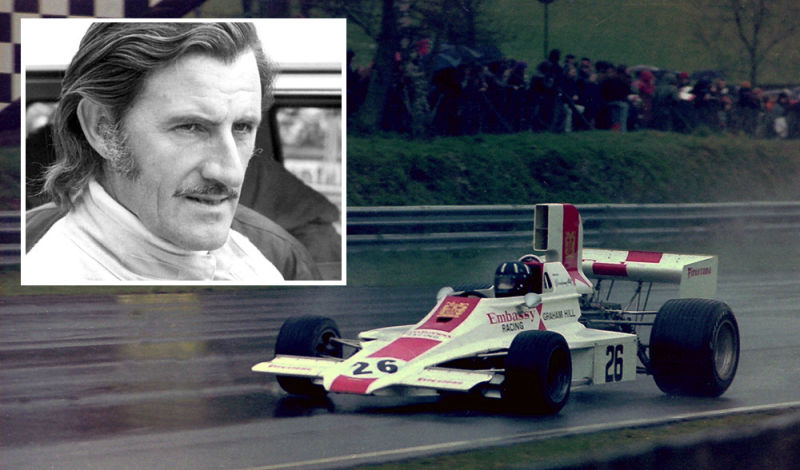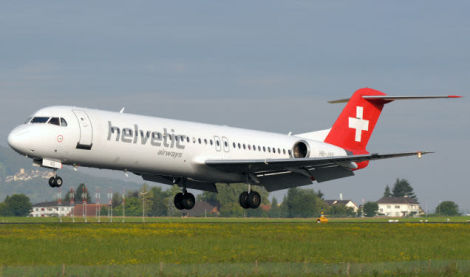Welcome to This Date in Aviation History, getting of you caught up on milestones, important historical events and people in aviation from November 28 through November 30.
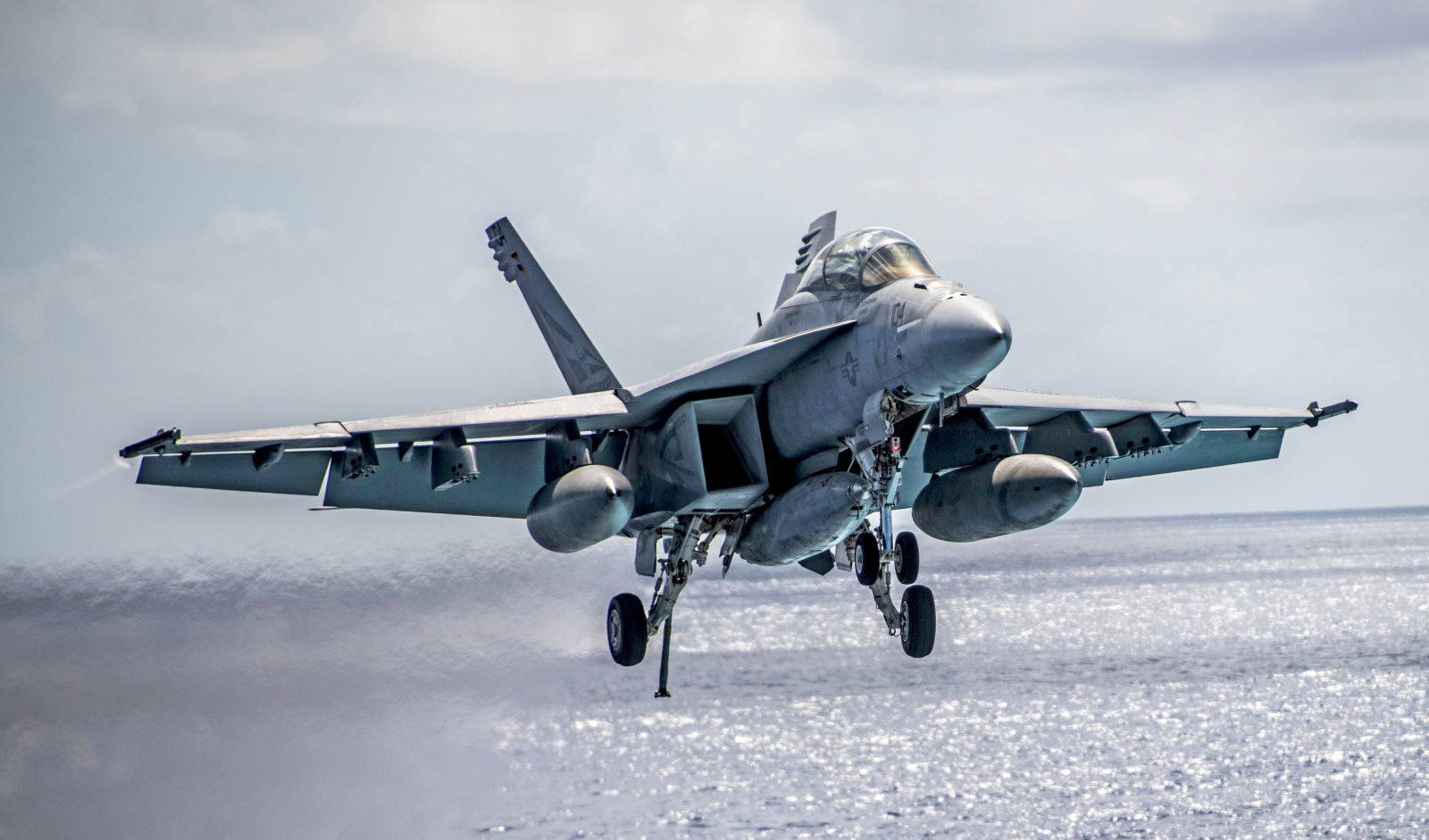
November 29, 1999 – The first flight of the Boeing F/A-18E/F Super Hornet. When the US Navy introduced the F/A-18 Hornet as its new multi-role fighter in 1984, they knew they had a winner on their hands, and the Hornet quickly became the Navy’s primary fighter and attack aircraft. But as the Navy began phasing out the Grumman F-14 Tomcat, and when the high-tech stealth McDonnell Douglas A-12 Avenger II flying wing attack plane never made it off the drawing board, the Navy realized that it needed a larger aircraft, similar in size to the Tomcat or the Air Force’s McDonnell Douglas F-15 Eagle, to fill the roles of both fleet defense fighter and ground attack. Back in the early 1980s, McDonnell Douglas pitched the idea of an enlarged Hornet to the Navy, originally calling it the Hornet 2000. They suggested that a larger aircraft derived from the F/A-18 could carry more weapons, more fuel, and have more powerful engines than its predecessor, and the program was officially announced in 1988. But while the single-seat F/A-18E and two-seat F/A-18F Super Hornet bears a strong resemblance to the original F/A-18, it is, in fact, an entirely new aircraft, not just a scaled-up variant.
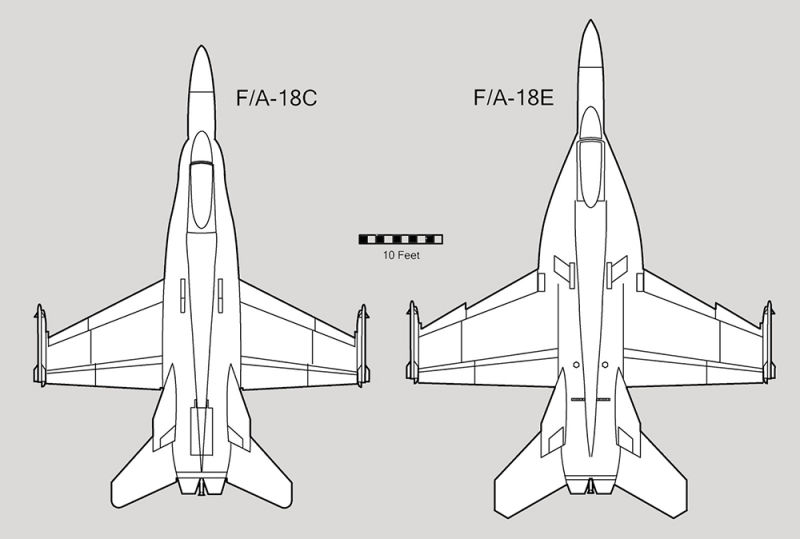
The Super Hornet is roughly 20 percent larger than the Hornet and 7,000 pounds heavier. It carries 33-percent more fuel, which increases the range by 41-percent over the Hornet. The Super Hornet is also equipped with a “buddy store” refueling system that allows it to act as an airborne tanker, taking over the aerial refueling mission of two other retired Navy aircraft, the Grumman KA-6D Intruder and the Lockheed S-3B Viking. But despite its larger size, the Super Hornet actually contains 42-percent fewer structural parts than the Hornet. The General Electric F414 afterburning turbofans used on the Super Hornet are a more powerful derivative of the F404 engines found on the Hornet, and the same engine that would have powered the canceled Avenger. The F414 engines give the Super Hornet a 35-percent boost in thrust and provide a top speed of Mach 1.8. The engines are fed by distinctive, box-shaped intake ramps similar to those seen on the F-15.
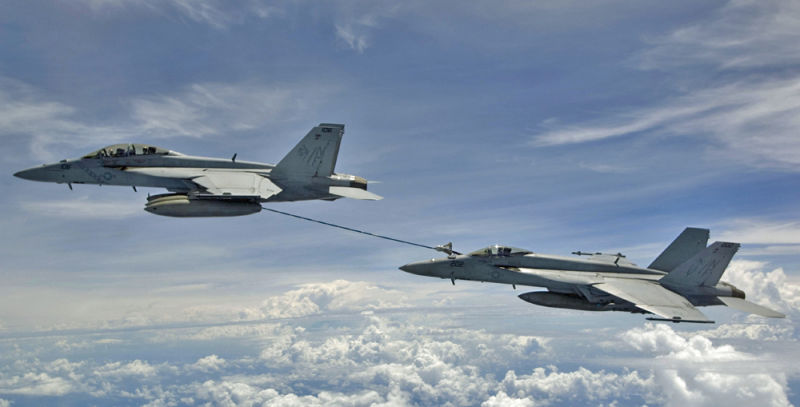
The Super Hornet, nicknamed Rhino by its crews to avoid confusion with the Hornet, reached initial operating capability in September 2001 and quickly became a vital part of the Navy’s strike capabilities. Super Hornets flew their first combat missions over Iraq during Operation Southern Watch (1992-2003) over Iraq, and have since become regular participants in the ongoing conflicts in Afghanistan, Iraq and Syria. While the Super Hornet has become a stalwart of the US Navy, the US Marine Corps has staunchly opposed adopting the F/A-18E/F, fearing that doing so will compete with their ability to procure the Lockheed Martin F-35B Lightning II, the STOVL variant of the new Joint Strike Fighter. The only other nation currently operating the Super Hornet is Australia, which purchased 24 F/A-18Es to replace its fleet of General Dynamics F-111 Aardvarks, though in November of 2016 the Canadian government announced a plan to purchase 18 Super Hornets while they reconsider their decision to purchase the Lockheed Martin F-35 Lighting II as a replacement for their aging fleet of CF-18 Hornets. However, a trade dispute between Boeing and Canadian manufacturer Bombardier caused Canada to cancel their order. Boeing has built over 500 Super Hornets, and the aircraft remains in production. As older Super Hornets begin to show their age, the Navy is seeking to buy more F/A-18Es to fill the gap until the arrival of the F-35C scheduled for 2018.
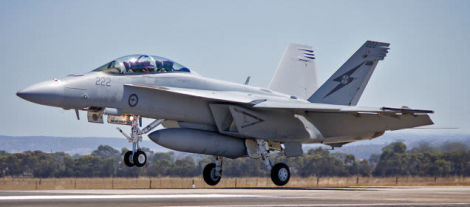
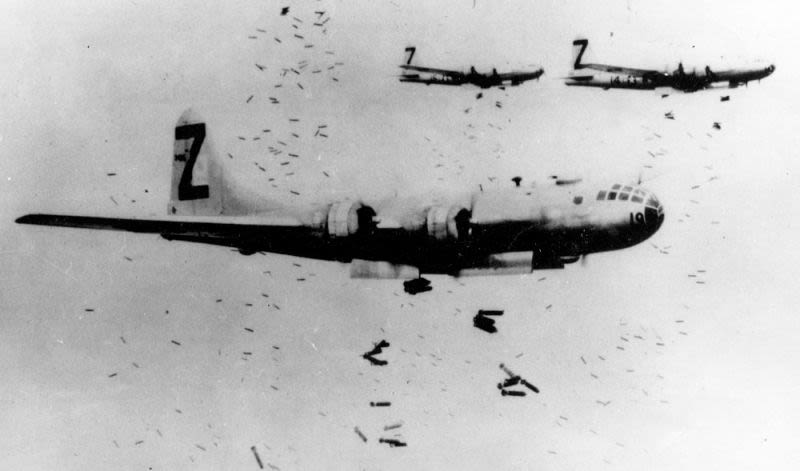
November 29, 1944 – The US Army Air Forces carry out the first incendiary raids against Tokyo. In the closing stages of WWII, as the island hopping campaign brought the Allies closer and closer to the Japanese homeland, American forces steadily increased the number and size of bombing raids against Japan’s manufacturing assets. However, unlike most Western countries, where manufacturing was generally concentrated in large factories and industrial centers, Japan’s war materiel was produced mostly in smaller dispersed factories, and in homes as a cottage industry. This rendered traditional “precision” strategic bombing, which was carried out in daylight and from high altitude, largely ineffective. So General Curtis LeMay, head of all strategic air operations against Japan, made the decision to switch to fire raids against Japanese cities, missions in which the bombers flew at altitudes of 5,000-8,000 feet, and at night, since accuracy was not required.
The conventional bombing of Tokyo, using high explosives, had commenced on November 24, 1944 when 111 Boeing B-29 Superfortresses struck an aircraft factory on the outskirts of the city. This was followed by another conventional bombing mission on the 27th, before the first incendiary raid was carried out on the night of November 29-30, which destroyed 2,773 structures. The B-29s were armed with M-69 incendiary bombs and, though a single M-69 munition weighed only six pounds, it was dropped inside a canister that held 38 munitions each. Normally, each B-29 carried 37 bombs, totaling 1,400 individual fire-starting munitions per plane. After it was dropped, the canister opened automatically and dispersed the smaller munitions, which ignited on contact with the ground and spread a highly flammable jellied gasoline compound.
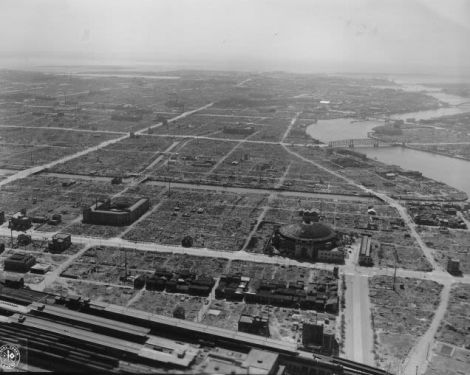
Though conventional bombing missions continued, the fire raids against Tokyo rose to a horrifying crescendo with Operation Meetinghouse on March 9-10, 1945. In a mission that has gained notoriety as the single most destructive bombing raid in history, 346 B-29s left Guam and headed for the Japanese capital. Arriving over the city at 2:00 am on March 10 (Guam time), the bombers dropped almost 1,700 tons of incendiaries on a city built almost entirely of wood. The resulting firestorm destroyed 16 square miles of buildings, or seven percent of the city’s urban area. The fires burned so fiercely that many of those killed were suffocated as the fires consumed all the oxygen. Following the raid, Tokyo police estimated that nearly 84,000 people had been killed, 41,000 injured and 1,000,000 left homeless. Postwar estimates are as high as 100,000 killed. The USAAF lost 14 aircraft, below the 5-percent loss rate that was considered acceptable.
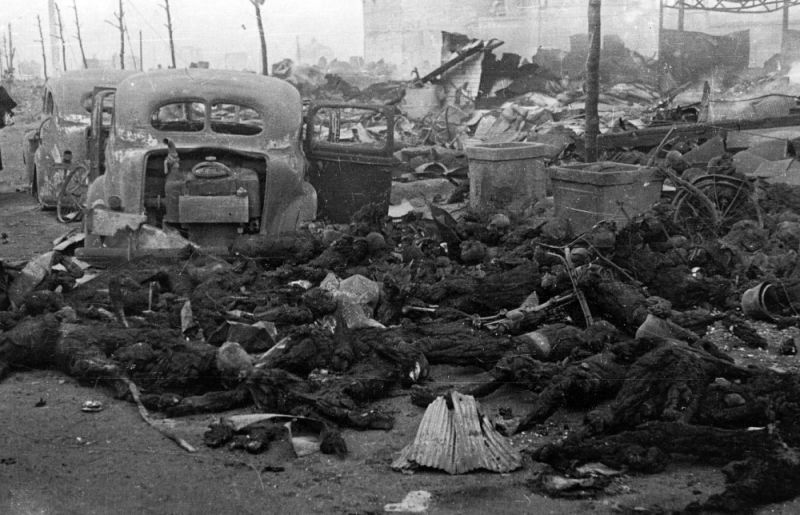
The firebombing raids continued in the belief that the attacks would cause the Japanese leaders to capitulate. They did not. According to one estimate, the incendiary campaign resulted in the destruction of 180 square miles in 67 cities, and killed more than 300,000 people, a number that exceeds the death toll in both atomic bombings combined. At the time, the US had few moral qualms about destroying such large areas of cities along with their civilian populations. Military planners believed that these raids would shorten the war and save American lives by preventing a costly invasion of the Japanese home island. It wasn’t until the atomic attacks on Hiroshima and Nagasaki in August of 1945 that the war finally ended. But there were still two more firebombing raids after Nagasaki before Japan’s formal surrender.
Short Takeoff
November 28, 2008 – The first flight of the Comac ARJ21, a narrow-body, twin-engine regional airliner built by Commercial Aircraft Corporation of China (Comac) as part of China’s effort to reduce reliance on foreign aircraft manufacturers. The ARJ21 bears a significant resemblance to the McDonnell Douglas MD-80, but Comac says that they did not copy the American airliner, though they did reuse tooling provided by McDonnell Douglas for the construction of license-built MD-80s in China. The ARJ21 also features a new supercritical wing that was designed with the help of Russian engineers. The ARJ21 entered service in June 2016, and Comac currently has over 300 orders for the regional jet, with eight deliveries to Chengdu Airlines as of November 2018.
November 28, 1979 – The crash of Air New Zealand Flight 901, a flight that operated from Auckland, New Zealand on sightseeing trips over Antarctica. On the 14th flight on the route, the McDonnell Douglas DC-10-30 (ZK-NZP) crashed into Mt. Erebus, the second highest volcano in Antarctica, killing all 257 passengers and crew. Initially, Air New Zealand blamed the crash on pilot error, but a Royal Commission of Inquiry found that the course the pilots usually flew on the return leg had been altered in the flight computer before the plane took off, and the pilots hadn’t been informed. Instead of flying over McMurdo Sound as planned, the plane flew into the volcano. The crash remains New Zealand’s deadliest peacetime disaster.

November 28, 1964 – The launch of Mariner 4, the fourth in a series of spacecraft designed for fly-by planetary exploration. On July 14-15, 1965, Mariner 4 became the first spacecraft to perform a fly-by of Mars and sent the first pictures of the planet’s surface back to Earth. With nothing visible but rocks and craters, the photographs changed many scientific opinions on the possibility of life on Mars. After two years without contact from the probe, NASA re-established communications in 1967, and recorded numerous micrometeoroid strikes on the spacecraft, leading NASA to suspect that Mariner 4 had flown through the remnants of a destroyed comet. In December 1967, NASA terminated communications with Mariner 4, and the derelict probe remains in a heliocentric orbit.
November 29, 1975 – Two-time Formula 1 World Champion driver Graham Hill is killed in the crash of his private plane. Hill was at the controls of his twin-engine Piper PA-23 Aztec while on a return flight to England after a test session at the Paul Ricard Circuit in France. On board with Hill were driver Tony Brise in his first season of Formula 1, mechanics Terry Richards and Tony Alcock, designer Andy Stallman, and manager Ray Brimble, all members of Hill’s Embassy Hill racing team. While approaching Elstree Airfield at night and in heavy fog, Hill’s Piper crashed onto a golf course north of London, killing all on board. While investigators could find no direct cause for the crash, they did learn that Hill’s aircraft registration had lapsed, as had his instrument flight rating. Investigators gave pilot error as the most likely cause.
November 30, 1986 – The first flight of the Fokker F100, a medium-sized twin-engine airliner and the largest jet airliner built by Fokker before the company entered bankruptcy in 1997. Developed to replace the smaller Fokker F28 Fellowship, the 100-seat F100 arrived at a time when there were few competitors for airliners of that size. Initial sales were strong, but competitors soon caught up and sales fell. In spite of the slump, it was ultimately financial mismanagement that doomed the storied aircraft builder, leading its parent company, Daimler Benz Aerospace, to shut down the company in 1996. Fokker built 283 F100s before the company folded, and 113 were operational as of 2017, mostly with smaller regional airlines.
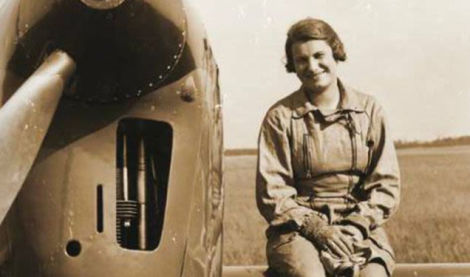
November 30, 1934 – The death of Hélène Boucher. Boucher was born on May 23, 1908, purchased her first airplane, a de Havilland DH.60 Gipsy Moth, in 1931 and learned navigation and aerobatics. She made a name for herself competing in air races and, in 1933 and 1934, she set several world records, including one for altitude for a woman pilot and several speed records for flight over a distance of 1,000 km while flying a Caudron C.460 race plane. Boucher died while flying a Caudron C.430 Rafale when the aircraft crashed into a forest, and Boucher was posthumously made a knight of the Légion d’honneur, France’s highest honor. She was also the first woman given the honor of lying in state at the Hôtel national des Invalides.
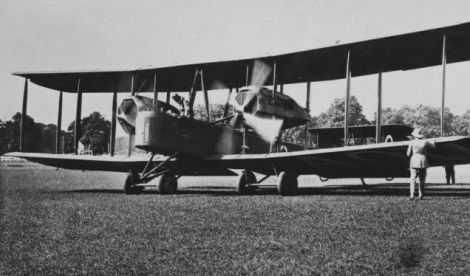
November 30, 1917 – The first flight of the Vickers Vimy, a twin-engine heavy bomber developed for the Royal Air Force late in WWI. By the end of the war, only three had been delivered to the RAF and did not take part in the conflict. However, the size and long range of the Vimy made it an excellent candidate for long-distance record setters, and a Vimy flown by John Alcock and Arthur Brown has the distinction of being the first aircraft to complete a non-stop transatlantic flight in 1919. Others undertook notable long-distance flights from England to Australia and England to South Africa. With modifications to enlarge the fuselage, the Vimy was developed into the Vimy Commercial with accommodations for 10 passengers. The type was finally retired in 1933.
Connecting Flights
If you enjoy these Aviation History posts, please let me know in the comments. And if you missed any of the past articles, you can find them all at Planelopnik History. You can also find more stories about aviation, aviators and airplane oddities at Wingspan.
